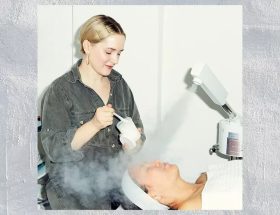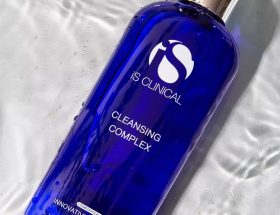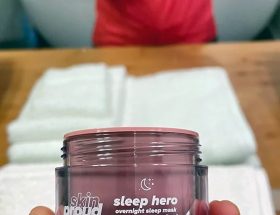How to Treat Vaginal Acne
Excess oil production and inflammation caused by things like stress, hormones, and genetics are leading causes of acne that develops on the face and body. According to a Harvard Health Publishing article, adult acne, which happens to be on the rise, can also be caused by things like bacteria and inflamed hair follicles.1 It’s no wonder, then, that the pubic region is also a spot where breakouts tend to flare up. Sometimes, this happens along the bikini line; other times, pores on your vulva can become clogged, causing blackheads on private areas.
Ahead, two leading cosmetic dermatologists and a celebrity aesthetician and dermatologic nurse explain how to treat vaginal acne.
Natalie Aguilar is a celebrity aesthetician and dermatological nurse. She practices at her exclusive N4 Skincare studio in West Hollywood.
Michele Green, MD, is a board-certified cosmetic dermatologist specializing in acne treatment along with laser resurfacing and other cosmetic treatments.
Marina I. Peredo, MD, FAAD, is a board-certified dermatologist and founder of Skinfluence NYC.
What Is Vaginal Acne?
Although common, breakouts along the bikini line and groin are, according to Green, “very upsetting for my patients. Without warning, many people develop sebaceous cysts or acne-type eruptions in the groin and vaginal area. It is very important to stay on top of these things as serious bacterial infections can occur.” She explains there are a couple of different types of breakouts that can develop, including a “comedonal lesion (much like a blackhead), a papule, pustule (pus filled lesion), or cyst (which are generally larger and more painful).”
According to Peredo, one of the most common types of acne that can develop on the genitals is folliculitis. “Folliculitis is inflammation around the hair follicles, typically as a result of shaving. The hair gets trapped under the skin and becomes clogged,” she explains. “Folliculitis can also occur from wearing tight clothing and ingrown hairs. The hair in the genital area tends to be curly, so it is more common for folliculitis to occur. The key is to make sure that you have good personal hygiene after shaving.”
Ingrown hairs are easy to identify, as Green says you can often “visualize a bump underneath” that appears as a “small black dot.”
Another highly common type of vaginal acne is hidradenitis suppurativa, which is what Peredo calls “inverse acne. These are large, painful cysts that normally affect the vaginal area, genital area, under the arms or under the breasts. This occurs when sweat glands get clogged.2 They can be painful and don’t heal very well, which can result in scars. Hidradenitis suppurativa can be treated with Accutane.” Green notes that this type of acne and “infection can be so large and painful that oral antibiotics, cortisone injections, and surgical excision are often necessary to treat this.”
Although vaginal acne is common, Aguilar notes that “there are also a number of other conditions, some infectious, that may be mistaken for vaginal pimples such as yeast or viruses,” so it’s important to keep an eye on any type of breakouts on the groin area.
Causes and Prevention
Aguilar says that clogged pores can contribute to vaginal acne. “Vaginal pimples can form when dirt, sweat, and bacteria build up inside a pore, causing inflammation.” As aforementioned, these types of pimples, are, according to Aguilar, “just like pimples on any other part of our face and body. They can be small, or they can be big.”
Irritation or excess heat, according to Green, is another cause of vaginal acne. “Many people, especially during the summer, exercise, swim, and stay out in the heat without showering. The perspiration and clogged pores, especially in the buttock and vaginal area, can cause acne breakouts.”
If the breakout results from contact dermatitis, Green says “exposure to different chemicals, creams, laundry detergent, fragrance, sanitary pads, feminine wipes, perfume, fragrant bubble baths or lotions, or anything else that comes in contact with the vaginal area” can be the culprit. “Occlusion from heat, sweating, tight clothes, spandex (and other fabrics other than cotton) can cause this type of acne or cysts in the vaginal area,” explains Green.
To avoid folliculitis, especially if you’re prone to developing ingrown hairs, Green advises laser hair removal “to treat the bikini area.”
As tempting as it may be to perform extractions on your bikini line, our experts advise against this. “It is best not to try to extract ingrown hairs yourself,” says Green, “since you need to lance the skin under sterile procedures. It is best to leave that to the professionals in order to avoid infection.”
Aguilar suggests a DIY mask for the bikini area that’s made from full-fat non-flavored Greek yogurt. “It balances the pH, relieves itchiness, provides beneficial bacteria, and the gentle lactic acid, found in yogurt, provides a gentle exfoliation,” she explains.
Keep the area clean and pH balanced. “It’s best to clean the bikini line with appropriate pH-balanced cleansers made for the vaginal area,” suggests Aguilar. “Other cleansers can irritate and throw off the pH of the area, causing a bacterial imbalance and making it an ideal environment for bacteria.”
Compresses are a good solution, to “bring down inflammation and calm some of the pain,” says Aguilar. “You can, however, hold a warm water compress, followed by an ice-cold water compress.” Peredo is also a fan of warm compresses, followed by a spot treatment. “Benzoyl peroxide is a great product to use to prevent breakouts,” she says.
Aguilar suggests you apply “Fur’s Ingrown Concentrate Oil. This oil can be applied post-shave or after cleansing. It helps soothe irritation and lightens discoloration.” She also likes Completely Bare Bikini Bump Blaster Pads, which are saturated in witch hazel, salicylic acid, and glycolic acid. “This blend helps reduce the appearance of ingrown hairs and bikini bumps.” Plus, she loves the acidic combo: “It’s amazing for blemishes and keeping the pores fresh, clean and balanced,” she says.
Peredo advises against squeezing the pimple, as it can spread the infection and cause serious problems.
To prevent further infection, you might have to see a doctor, even to treat an ingrown hair. “If it doesn’t resolve within two to five days and it becomes more painful, you may need to see a gynecologist or dermatologist,” advises Aguilar. She notes a doctor can “recommend a topical or oral antibiotic to soothe inflammation and prevent further infection. They may also have to extract the hair.”
She says these these types of breakouts shouldn’t be embarrassing. “Anyone who grooms, whether it be shaving, waxing, trimming, plucking, sugaring, or even cleansing, can be prone to [folliculitis]. I also have several clients who are prone to ingrown hairs simply from riding a bike. It is more common than we will ever know.”
Finally, a physician’s diagnosis is always a good idea with these types of breakouts. According to Peredo, there are lesions that may look like acne, but in fact may be sexually transmitted diseases or infections. “Herpes on the genital area can appear as a pimple, but it’s really a vesicle, a fluid-filled pimple,” she says. “Molluscum contagiosum can often be confused with acne because it looks like tiny brown bumps with a dimple in the center. This virus is sexually transmitted.”
Similar to condyloma, or vaginal warts, “molluscum contagiosum can spread,” says Green, “and needs to be treated.”
Finally, any discharge or odor from the vaginal area, according to Green, should warrant a consultation with a board-certified dermatologist “to assist you before the problem becomes more serious.”









